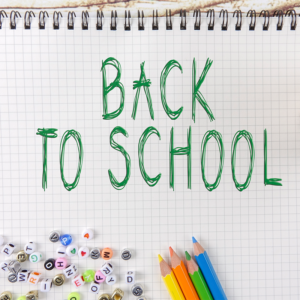Interventional Care


We notice that you are visiting us from . This site only services US-based visitors. Would you like to visit the site that is appropriate for your location?

If you’re a parent with school-aged children navigating the world of “return to school options”, you know that the end of summer requires decisions regarding face-to-face or virtual education for the upcoming school year. And these are not easy decisions, nor are they taken lightly. The truth is that people are struggling with this pandemic in so many ways, one of which includes deciding which type of education our children will receive.
Many parents are not able to keep their kids at home and educate virtually due to work obligations. Additionally, schools provide more than just education and childcare resources for many families—they can provide food, and support for other critical services1. It is no secret that not having access to these resources can put profound stress on families and the larger community. On a larger scale, it will take COVID-19 mitigation factors in the community and easy accessibility to testing to allow the safe re-opening of schools.
The Centers for Disease Control and Prevention (CDC) have provided a comprehensive document to return children, teachers and administrators to school2 so that brick and mortar locations are able to open safely and effectively. Ultimately, this requires school officials to make the decision to reopen based on community transmission levels and capacity to implement the mitigation strategies below.
The considerations2 provided in this document include:
It is critical that staff, students and families are educated to stay home when appropriate to reduce the spread of COVID-193. If school employees or students are sick or have had recent close contact (less than 6 feet for 15 minutes or more) with a person with COVID-19, they should stay home; staff and students who have tested positive or are showing COVID-19 symptoms should also stay home. Schools should work with local officials to establish transparent criteria for when in-person learning should be suspended to slow the spread of infection, as well criteria for when it is appropriate to resume in-person learning.
With schools reopening, concerns about COVID-19 infection in children comes to the foreground. While the body of evidence is still developing, children appear to be at a lower risk for contracting COVID-19 compared to adults, and when infected, generally have less serious illness (asymptomatic infections were not uncommon4). Early reports propose that COVID-19 cases in children vary by age and underlying health and socio-economic factors2. The development of multisystem inflammatory syndrome (MIS-C) has occurred in rare instances in some children after SARS-CoV-2 exposure, and most of those children hospitalized with MIS-C have recovered2. Certainly, more data around school-aged children and COVID-19 infection and transmission will be available as the school year unfolds.
Lastly, as we head into the fall season, during the COVID-19 pandemic, it is important for all age groups to get vaccinated against seasonal influenza! Beginning at the age of six months, everyone should receive a flu shot every season (with only rare exceptions), and vaccination is very important for those people who are at high-risk from complications from influenza5. The CDC recommends flu vaccination before the flu begins spreading in their communities (which is typically in the early fall). Antibodies are developed in the body and protect against the flu about two weeks after vaccine is administered. The flu vaccine will be instrumental in keeping our communities safe as we head into a season of not only other respiratory illnesses, but also COVID-19 (which does not yet have a approved vaccine).
As we forge forward, continue to take precautionary and preventative measures such as getting the influenza vaccine, wearing masks, performing hand hygiene frequently (PDI Sani-Hands® wipes), disinfecting high touch surfaces (see PDI’s products on EPA’s List N) and practicing social distancing! Together, these things can help keep us all safe and healthy, from both COVID-19 and seasonal influenza infection.